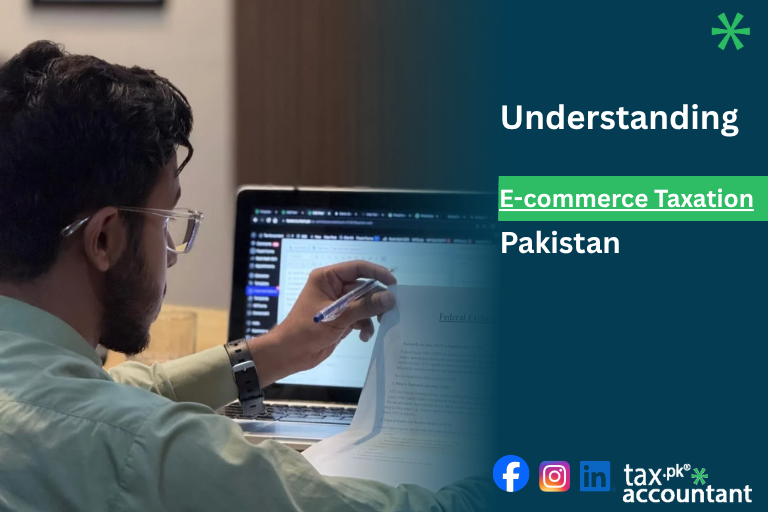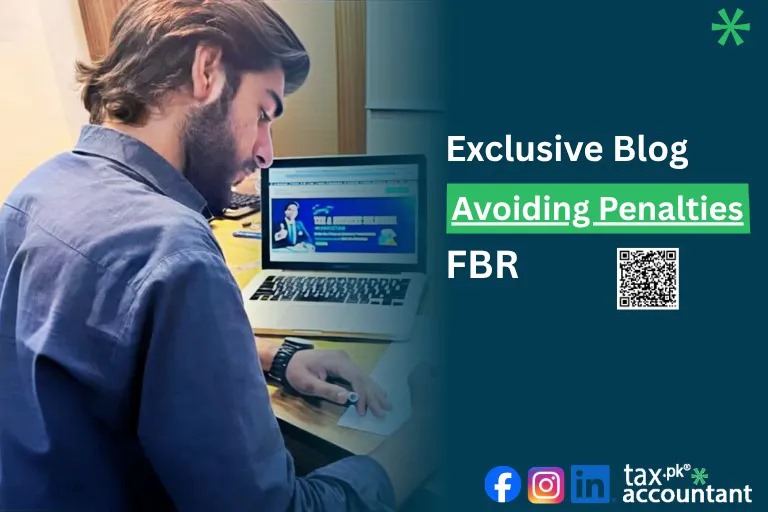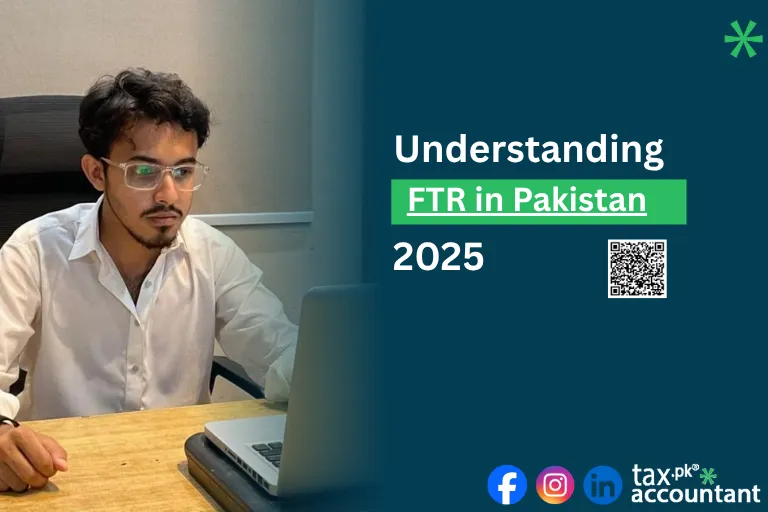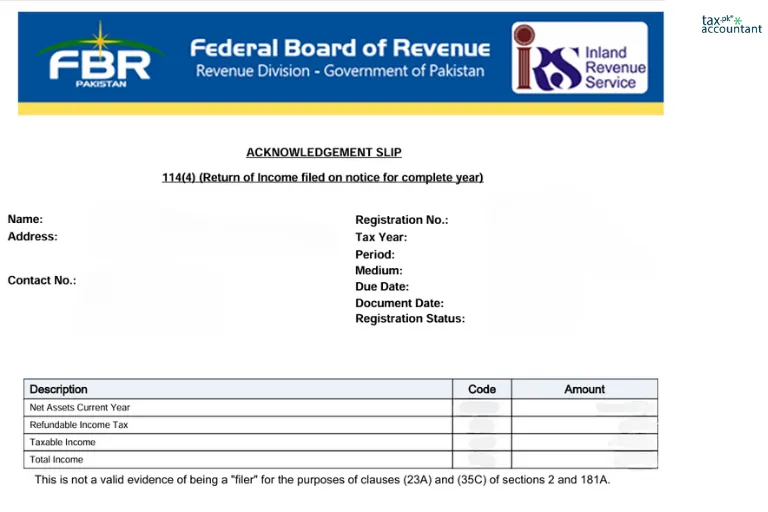I Got a 111(1) Notice to Explain Income/Asset from FBR:
As per definite information available within this office you have made investment of Rs. 6,164,737/ for
the purchase of immoveable property in tax year 2022 in shape of following entry;
IT2021050801011112683 08-May-2021 9020509 SUB REGISTRAR, DEPLAPUR A244269
3530129948289 XXXXXXXXXX Alternate Delivery Channel WITHHOLDING
TAX PAYMENT236K Purchase / Transfer of Immovable Property u/s 236K 61,037 6,103,700
Examination of your income tax return filed along with the wealth statement reveals that the
same has not been declare in your wealth statement which attracts the proceedings u/s 111(1)(b) of the
income tax Ordinance 2001 . You are hereby being provided an opportunity that why the amount at Rs.
6,164,737/may not be treated as concealed income and added back to your taxable income/
FBR is looking forward for tax compliance culture in Pakistan
CORRIGENDUM
As per definite information available within this office you have made investment of Rs. 6,164,737/ for the purchase of immoveable property in tax year 2022 in shape of following entry;
IT202105080101111268308-May-2021 9020509SUB REGISTRAR, DEPLAPUR A244269
3530129948289 HAMMAD AHMAD Alternate Delivery Channel WITHHOLDING TAX PAYMENT 236K
Purchase / Transfer of Immovable Property u/s 236K 61,037 6,103,700
Examination of your income tax return filed along with the wealth statement reveals that the same has not been declare in your wealth statement which attracts the proceedings u/s 111(1)(b) of the income tax Ordinance 2001 . You are hereby being provided an opportunity that why the amount at Rs. 6,164,737/may not be treated as concealed income and added back to your taxable income/
FBR is looking forward for tax compliance culture in Pakistan
I Got a 111(1) Notice to Explain Income/Asset from FBR: What Should I Do?
Receiving a Section 111(1) notice from Pakistan’s Federal Board of Revenue (FBR) can be intimidating for any taxpayer. This detailed guide will help you understand what the notice means, why you received it, and—most importantly—what steps you should take to respond effectively and avoid severe tax consequences.
What is a Section 111(1) Notice?
Section 111(1) of the Income Tax Ordinance, 2001 empowers the FBR to question taxpayers about unexplained income or assets. If you receive such a notice, it means the FBR suspects you have income or assets that are not properly declared in your tax filings. If you cannot provide a satisfactory explanation, the FBR can treat the amount as concealed income and add it to your taxable income, potentially resulting in additional taxes and penalties24.
Why Did You Receive a Section 111(1) Notice?
The FBR issues a Section 111(1) notice when it detects discrepancies between your declared income and your assets, expenditures, or bank transactions. Common triggers include:
-
Large unexplained deposits in your bank accounts
-
Purchase of property or other assets not supported by declared income
-
Information from third parties (e.g., banks, property registries) that does not match your tax records
-
Significant differences between your lifestyle and reported income24
Example from the Notice:
“You have made investment of Rs. 6,164,737 for the purchase of immoveable property in tax year 2022…Examination of your income tax return filed along with the wealth statement reveals that the same has not been declared in your wealth statement…”1
Legal Context: Section 111(1) and Related Provisions
Section 111(1): Unexplained Income or Assets
-
Allows FBR to question unexplained credits, investments, expenditures, or assets.
-
If you cannot explain the source, the amount is added to your taxable income as “income from other sources.”4
Section 122: Amendment of Assessment
-
Enables FBR to amend your tax assessment if they find your declared income incomplete or incorrect, based on definite information.
-
The Supreme Court has clarified that a notice under Section 122(9) can sometimes suffice for proceedings, but Section 111(1) specifically targets unexplained assets/income45.
What Should You Do After Receiving a Section 111(1) Notice?
1. Read the Notice Carefully
-
Identify the specific transactions or assets in question.
-
Note the tax year(s), deadlines, and required documentation.
2. Gather and Review Your Documentation
Collect all relevant records, including:
-
Bank statements for the relevant period
-
Property purchase/sale agreements
-
Investment records
-
Previous tax returns
-
Wealth statements
-
Any contracts, gift deeds, inheritance documents, or loan agreements that explain the source of funds2
3. Prepare a Detailed Explanation
For each item questioned by the FBR:
-
Clearly explain the source of the income or asset.
-
Reference supporting documents for each explanation.
Example Table: Organizing Your Response
| Item/Transaction |
Amount (PKR) |
Explanation (Source) |
Supporting Document(s) |
| Property Purchase |
6,164,737 |
Sale of previous property |
Sale deed, bank statement |
| Bank Deposit |
2,000,000 |
Gift from father |
Gift deed, father’s bank record |
| Investment in Shares |
1,000,000 |
Declared business income |
Tax return, investment record |
4. Compile and Organize Evidence
-
Attach all relevant documents in an orderly manner.
-
Make sure each explanation is backed by documentary proof.
5. Respond Promptly via the Correct Channel
-
Submit your explanation and evidence via the FBR’s IRIS portal or as instructed in the notice.
-
Ensure you meet the deadline to avoid penalties.
6. Consult a Tax Professional if Needed
If the case is complex or you are unsure about your explanation, consult a tax advisor or chartered accountant. Professional guidance can help you avoid mistakes and strengthen your response2.
What Happens If You Ignore or Fail to Satisfactorily Respond?
Failure to respond or provide a satisfactory explanation can have serious consequences:
-
The FBR may treat the unexplained amount as concealed income and add it to your taxable income.
-
Penalties and additional tax liabilities may apply.
-
In some cases, prosecution for tax evasion is possible23.
Penalties Table (Section 182, Income Tax Ordinance, 2001)
| Offence |
Penalty |
Reference Section |
| Failure to furnish return of income |
0.1% of tax payable per day (max 50% of tax) or min Rs. 40,000 |
114, 118 |
| Failure to furnish wealth statement |
0.1% of taxable income per week or Rs. 100,000 (whichever higher) |
114, 116 |
| Failure to respond to FBR notice |
Rs. 25,000 (first notice) |
177 |
| Filing false/misleading information |
Rs. 25,000 |
177 |
How to Avoid Section 111(1) Notices in the Future
-
Always declare all sources of income and assets in your tax returns and wealth statements.
-
Keep thorough records of all financial transactions, especially large deposits, property purchases, and gifts.
-
File your tax returns and wealth statements accurately and on time.
-
Consult a tax professional for complex transactions or if you are unsure about compliance requirements.
Frequently Asked Questions (FAQs)
Q: What if the funds came from a family gift or inheritance?
A: Provide a gift deed or inheritance document, along with bank statements or other records showing the transfer. The FBR requires documentary evidence to accept such explanations.
Q: Can I amend my tax return or wealth statement after receiving the notice?
A: You may be able to file an amended return or updated wealth statement if allowed by law, but consult a tax advisor to ensure compliance and avoid further complications.
Q: What if I do not have documentation for old transactions?
A: Explain the circumstances in your response. The FBR may still add the amount to your taxable income if the explanation is unsatisfactory or lacks evidence.
Q: Can I challenge the FBR’s decision?
A: Yes, you may appeal the decision through the appropriate legal channels if you believe the FBR’s assessment is incorrect.
Sample Response Template
Subject: Explanation of Source of Funds/Assets – Section 111(1) Notice
To: [FBR Officer Name/Office]
Date: [Insert Date]
Dear Sir/Madam,
In response to your notice dated [insert date] regarding unexplained investment of Rs. 6,164,737 for the purchase of immoveable property in tax year 2022, I submit the following explanation and supporting documents:
-
The amount of Rs. 6,164,737 was sourced from the sale of my previous property (sale deed attached).
-
The funds were transferred via bank account [account number], and the relevant bank statements are attached.
-
The transaction was inadvertently omitted from my wealth statement, and I request its inclusion.
Kindly find attached all supporting documents for your review.
Sincerely,
[Your Name & CNIC]
Conclusion
A Section 111(1) notice from the FBR is a serious matter but can be managed effectively with a prompt, organized, and well-documented response. Understand the notice, gather all relevant evidence, and provide a clear explanation for each questioned transaction or asset. When in doubt, seek professional tax advice to safeguard your financial interests and ensure compliance with Pakistani tax laws.
Key Takeaways:
-
A Section 111(1) notice means the FBR suspects unexplained income or assets.
-
Promptly review, document, and explain all questioned transactions.
-
Submit your response with supporting evidence before the deadline.
-
Seek professional help for complex cases or if you are unsure about your explanation.
-
Maintain accurate records and declare all assets/income in future filings to avoid such notices.
For further assistance, consult a qualified tax advisor or contact the FBR helpline.













